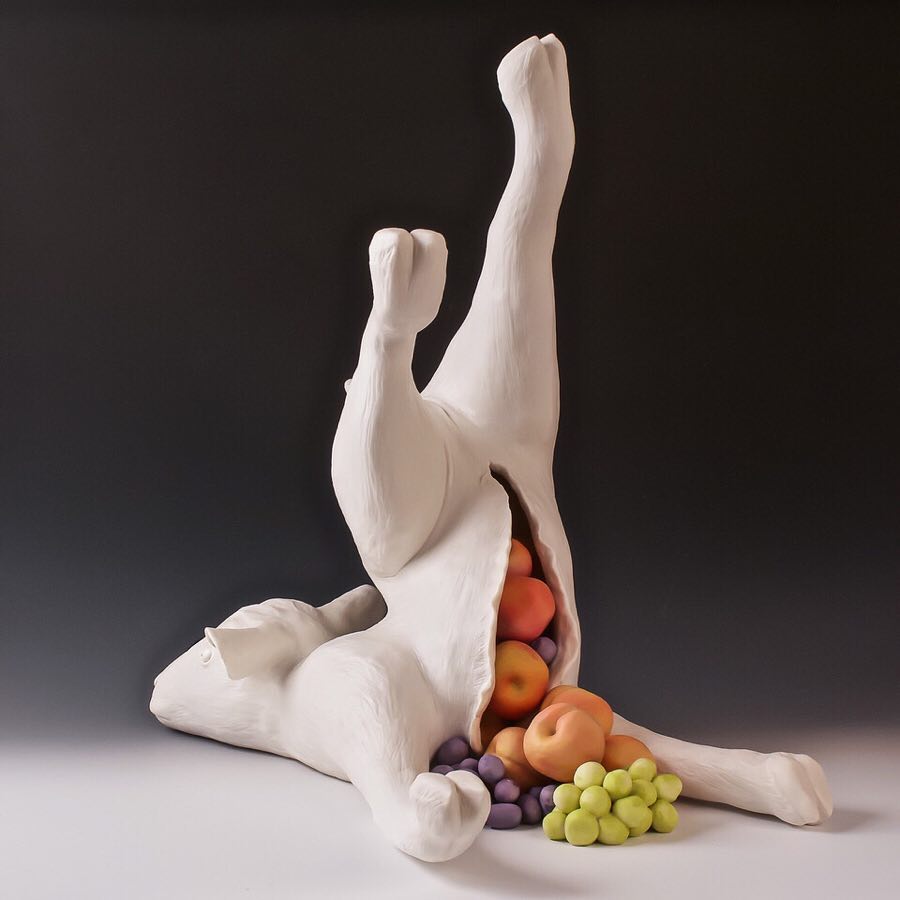
Kim Simonsson’s ceramic sculptures of strange children and their forest animal friends are like something out of a Nordic fairytale. Some of them have long ears giving them a fairy-like appearance, with empty eyes that make us wonder what lies underneath their ceramic “shell”. Previously featured on our blog, their strangeness is in part due to Simonsson’s combination of influences from Western and Eastern pop culture. Opening on October 8th, Simonsson will reveal his latest series at Jason Jacques Gallery in New York. Titled “Moss People,” most figures are colored a monochromatic green with clumps of growth, as if covered in moss. In Norse mythology, “moss people” are fairy or forest folk, specifically elven girls who lived in moss affected areas. According to legend, they would occasionally borrow items from people and steal little human children, leaving a changeling in their place. Swapped children is common in medieval literature and reflects concern over infants thought to be afflicted with unexplained diseases or other disabilities. Although they appear sweet, tending to young fawns and bunnies, Simonsson instills a darkness within their hard exterior: his self-described “unsightly” works examine the diseases of modern society. This connects with Simonsson’s overall theme, where his characters relate to the artist’s comments on daily life and its oddities.
Kim Simonsson’s “Moss People” will be on view at Jason Jacques Gallery in New York from October 8 through 28th, 2015.












 Ceramicist
Ceramicist